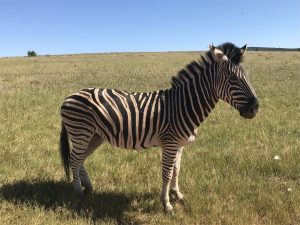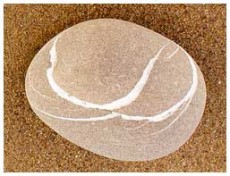
Out Beyond Ideas of Right and Wrong There is a Field. I’ll Meet You There (Rumi)
I cherish my collection of everything zebra, gained over the past few years: A piggy bank; a wooden one with straw mane and tail; another with ribbon-reins; a postcard photo of six zebras. I especially treasure the teeniest, the plastic one my friend Karen gave me the day after we did that yoga.
Years ago, when Karen’s now post-college sons were babies, we joined a partner yoga class. Couples filled the studio for insights about themselves and each other. Karen and I wanted fun and some sweet stretching.
The teacher started, “without thinking, name an animal that your friend reminds you of.”
Karen winked at me, “zebra.”
The teacher asked, “Why?”
Karen said, “I see everything black and white. Sue knows the full living thing. Sue is the whole zebra; stripes, what’s between and what’s beyond.”
True. I argue for growing the gray in between, as if inhaling deeply to help make an inner place for a broader picture. I want to look at the entire animal, as Karen noted, beyond and outside the stripes. Maybe it’s my training. Or maybe I have a wild Serengeti heart-mind. When asked to decide between right and wrong, I choose neither, or both.
Or maybe my pastry chef son teaches me to see beyond polarities with his possibility mind-set: “Why can’t we bake wasabi into a blueberry muffin? Sweet AND savory. How about a dessert that is both pie AND cake? And by the way, what are some other non-dual options?”
He’s told, “You think outside the box.”
He counters, “for me there is no box.”
I bet Einstein would agree: “you can’t solve a problem with the same mind that created it.” How can we answer life-size questions with small-mind thinking? How can we grow into Technicolor if we box ourselves into black/white?
I watched a real zebra once, from a Jeep in a game reserve. Staring straight on, I saw only stripes, as she stood a foot from my window. I leaned back to catch sight of her hugeness. With this new view, I glimpsed her bigger beauty and the immense African landscape behind her. Looking up revealed what had been unseen.
When we find ourselves flip-flopping we could heed poet Wallace Stevens’ roomy idea: “sometimes the truth depends on a walk around the lake.” Sometimes we need enlarged vistas. So I head out when I seek a shift from the stripy tightness of yes/no and yearn for the spaciousness of maybe. When I crave a panorama where I can set eyes on both inner and outer horizons, I lace up my Nikes and stroll around Portland’s green Eastern Promenade or stare into the blue around Falmouth’s Mackworth Island.
The external vastness can remind us that we have as much internal space as the plains where zebras roam. Our interior terrain equals the size of the great grasslands. Neuroscientists teach that –just as the zebra carries both black and white yet moves with grace—so we can hold differing thoughts and feelings at the same time, and thrive. We learn when we linger in the tension of opposites. How? By paying attention to and leaning into the in-betweens.
Today Karen said, “That memory and using that analogy has always served me. Nothing is black and white, not even black and white.”
As all my prized mini-zebras seem to explain, “she means even zebras are not binary.”
To ground in the full color of life, of others and of situations, my collection reminds me: “Shift your attention. Lean back. Open to a wide angle lens. Remember the ancient poet Rumi and go out beyond ideas of right and wrong.”
That challenge invites us to pause, to breathe and to be fully in the taffy-pull between poles.
That’s some sweet stretching.



Sue, Thanks you for these wise words. They are so helpful in these fractured times. Grey is quite a beautiful color and having the courage to see beyond the black and White is what we need today.